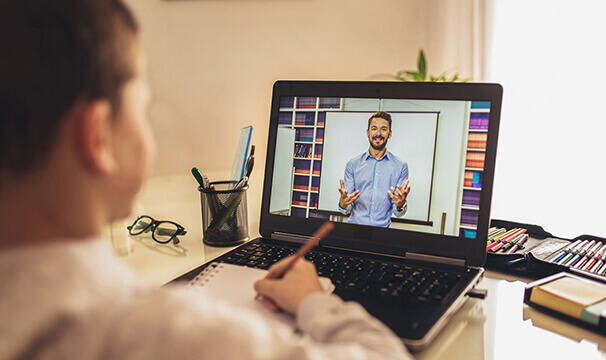As teachers begin to navigate what will undoubtedly be the new normal for quite some time, having the foundations in place to deliver on powerful remote learning strategies is important for students who are yet to return to the classroom.
Using three key components, Education Futurist Tony Ryan highlights some effective ways to support students remotely, with skills that can also be transferred when classroom activity resumes.
Teach students to think effectively
Ensuring students know how to explicitly think is fundamental. This is the single most powerful skill they will need to become self-managed learners.
There are generally four components to a quality thinking framework. These are often used in curriculum documentation worldwide:
- Analysis – students evaluate information and critically determine its contextual worth to their learning
- Inquiry – students are encouraged to think deeply, generate inquiry questions and explore what really matters
- Reflection – students need to think about how they can improve on their work, by asking questions like ‘what did I do well? What could I do differently?’
- Design – students focus on innate creativity and the ability to develop new ideas
When encouraging quality thinking, ‘self-talk’ is one of the most important lessons teachers can teach children. Self-talking is when students become aware of the thoughts that are happening inside their own heads.
Here is another obvious process for supporting great thinking. The first few minutes of a lesson can determine the quality of thinking for the entire lesson – so it is important to start immediately on something that generates intellectual rigour. During the lesson, encourage students to write down their core understandings, and to ask insightful questions.
Apply digital pedagogy
Once teachers are confident that students are able to explicitly think about what they are learning, the second is to apply digital pedagogy.
Pedagogy is the ‘how’ of effective teaching, and there are many ways of doing this, one of which is to focus on visual literacies. By making learning as visual as possible, children often learn much more effectively whether this is in a classroom or online.
However, when you’re facilitating remote learning it is important to remember the following:
- Do less work with students – remote learning isn’t the classroom, if you plan lessons with a similar amount of content, you run the risk of burning yourself out (and your students as well)
- Keep children active – encourage students to move around, every 30 minutes or so introduce some exercises
- Don’t talk for too long – 7 minutes tend to be the most that teachers can get away with remotely – perhaps try new ways to inspire thinking such as asking them to generate the three most important questions worth asking during the lesson.
- Develop ‘student agency’ – allow students to have control and responsibility for their own actions and thinking
Encourage emotional intelligence
The final component for delivering powerful remote lessons and encouraging quality learning is to support children’s emotional intelligence. Using both the heart and the brain, personal skills and how to work with other people is imperative to the development of emotional intelligence.
Understanding and managing your emotions and generating empathy are some ways this can be achieved. Teaching students to listen deeply to others and getting them involved with helping others are also wonderful ways to enhance emotional intelligence and strengthen learning.
Now more than ever, teaching really matters. It is the most critical profession for supporting young people to engage with the so-called New Normal. Ensuring the three key components are visible in remote learning strategies will help to develop empathetic learners who are also effective thinkers.

